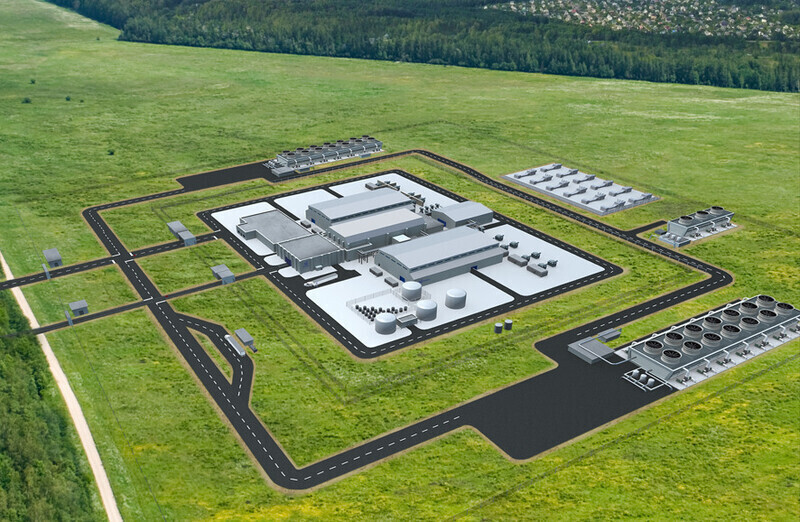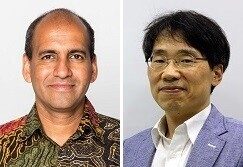hankyoreh
Links to other country sites 다른 나라 사이트 링크
[Guest essay] The hype and the reality of small modular reactors


By M.V. Ramana, professor at the University of British Columbia, and Seok Kwanghoon, energy policy advisor of Energy Transition Forum
Early this month, Uljin County announced plans to build six NuScale small modular nuclear reactors (SMRs). These NuScale SMRs are to generate electricity as well as heat and hydrogen. These plans are unrealistic and will only result in a large expenditure of money without any concomitant benefits. At the same time, it will increase the risk of accidents.
The proposed NuScale reactor design is the outcome of the Multi-Application Small Light Water Reactor project funded by the US Department of Energy in 2000 capable of generating 35 megawatts (MW). Since then, the NuScale design has been modified numerous times, from 35 MW to 40 MW in 2009, to 45 MW by 2010, and to 50 MW in 2016.
Twelve of these units (i.e., for a total of 600 MW of generation capacity) were proposed for the so-called Carbon Free Power Project in the US state of Idaho, whose cost was estimated to be US$4.2 billion in 2018. NuScale increased the design power output twice since then, first to 60 MW, and then to 77 MW.
NuScale’s design, evidently, does not seem to be a stable one. For this revised design, the cost estimate is even higher than the 2018 estimate. The cost of six NuScale 77 MW units (i.e., 462 MW in all) is now estimated at US$9.3 billion, 220 percent of the 2018 estimate, but for 23 percent less electricity.
Due to the frequent design changes and soaring costs, many local municipalities that originally joined the project have withdrawn. As of March 2023, these municipalities had agreed to purchase only 116 MW of the planned 462 MW of electricity from the CFPP plant. The absence of demand shows that NuScale’s first nuclear project is indeed in crisis.
NuScale’s cost is so high for two reasons.
First, nuclear power is inherently expensive; building reactors costs a lot. The Vogtle project, the most recent nuclear plant to be built in the United States, has cost over US$35 billion, up from an estimate of US$14 billion when construction started. The construction costs for nuclear power plants elsewhere have also increased; from around 3 billion euros to at least 11 billion euros for the Olkiluoto plant in Finland. Costs in the tens of billions are now typical for nuclear reactors, and almost all projects have cost overruns.
Second, building and operating SMRs will cost more than large reactors for each unit (megawatt) of generation capacity. A reactor that generates five times as much power will not require five times as much concrete or five times as many workers. The latest NuScale cost estimate is around 250 percent more than the initial per megawatt cost of the Vogtle project.
SMRs will also be late and suffer cost overruns. Russia’s first SMR, the KLT-40S, which is based on the design of reactors used in nuclear-powered icebreakers was expected to take three years to build, but took 13 years. Costs went up from an initial estimate of 6 billion rubles to at least 37 billion rubles. South Korea’s proposed NuScale project is unlikely to be an exception to this pattern.
Small reactors also raise all of the usual concerns associated with nuclear power, especially the risk of severe accidents. Reactors are highly complex technologies that are hazardous by nature. All nuclear plants, including SMRs, can undergo accidents that could result in widespread radioactive contamination. An accident at even a very small reactor can result in significant radiation doses to members of the public under some circumstances. Remember that Fukushima Daiichi-1 had an output of 460 MW, roughly the combined output of the reactors planned for Uljin County (462 MW).
Promoters of the Uljin project talk about the NuScale design as though it has been approved by regulators. However, only the 50MW design has received design certification, and that too conditionally. But NuScale has already abandoned the 50MW design due to poor economics. In the case of the 77MW design, the US Nuclear Regulatory Commission has identified six “challenging and/or significant issues,” two of which involve a steam generator, which is critical to safe operations.
Moreover, the plan announced in Uljin to produce hydrogen using a NuScale reactor will increase the complexity of the system and add another risk factor. Neither the NRC nor any other safety regulator has examined these risks thoroughly. It will also increase the cost of the project since the equipment for hydrogen production will have to be added.
To summarize, the NuScale proposal raises the risk of accidents and financial risks. The NuScale nuclear reactor is being promoted in Korea using unrealistic assumptions. One likely reason for this effort is to allow NuScale to distract from its financial woes, due to the floundering Carbon Free Power Project and other economic challenges. It is best not to pursue the project.
Please direct questions or comments to [english@hani.co.kr]

Editorial・opinion
![[Column] Park Geun-hye déjà vu in Yoon Suk-yeol [Column] Park Geun-hye déjà vu in Yoon Suk-yeol](https://flexible.img.hani.co.kr/flexible/normal/500/300/imgdb/original/2024/0424/651713945113788.jpg) [Column] Park Geun-hye déjà vu in Yoon Suk-yeol
[Column] Park Geun-hye déjà vu in Yoon Suk-yeol![[Editorial] New weight of N. Korea’s nuclear threats makes dialogue all the more urgent [Editorial] New weight of N. Korea’s nuclear threats makes dialogue all the more urgent](https://flexible.img.hani.co.kr/flexible/normal/500/300/imgdb/original/2024/0424/7317139454662664.jpg) [Editorial] New weight of N. Korea’s nuclear threats makes dialogue all the more urgent
[Editorial] New weight of N. Korea’s nuclear threats makes dialogue all the more urgent- [Guest essay] The real reason Korea’s new right wants to dub Rhee a founding father
- [Column] ‘Choson’: Is it time we start referring to N. Korea in its own terms?
- [Editorial] Japan’s rewriting of history with Korea has gone too far
- [Column] The president’s questionable capacity for dialogue
- [Column] Are chaebol firms just pizza pies for families to divvy up as they please?
- [Column] Has Korea, too, crossed the Rubicon on China?
- [Correspondent’s column] In Japan’s alliance with US, echoes of its past alliances with UK
- [Editorial] Does Yoon think the Korean public is wrong?
Most viewed articles
- 1‘We must say no’: Seoul defense chief on Korean, USFK involvement in hypothetical Taiwan crisis
- 2N. Korean delegation’s trip to Iran shows how Pyongyang is leveraging ties with Moscow
- 3‘Weddingflation’ breaks the bank for Korean couples-to-be
- 4Korea sees more deaths than births for 52nd consecutive month in February
- 5[Column] Park Geun-hye déjà vu in Yoon Suk-yeol
- 6Will NewJeans end up collateral damage in internal feud at K-pop juggernaut Hybe?
- 7[Column] Has Korea, too, crossed the Rubicon on China?
- 8Amnesty notes ‘erosion’ of freedom of expression in Korea in annual human rights report
- 9Samsung barricades office as unionized workers strike for better conditions
- 10[Column] The clock is ticking for Korea’s first lady